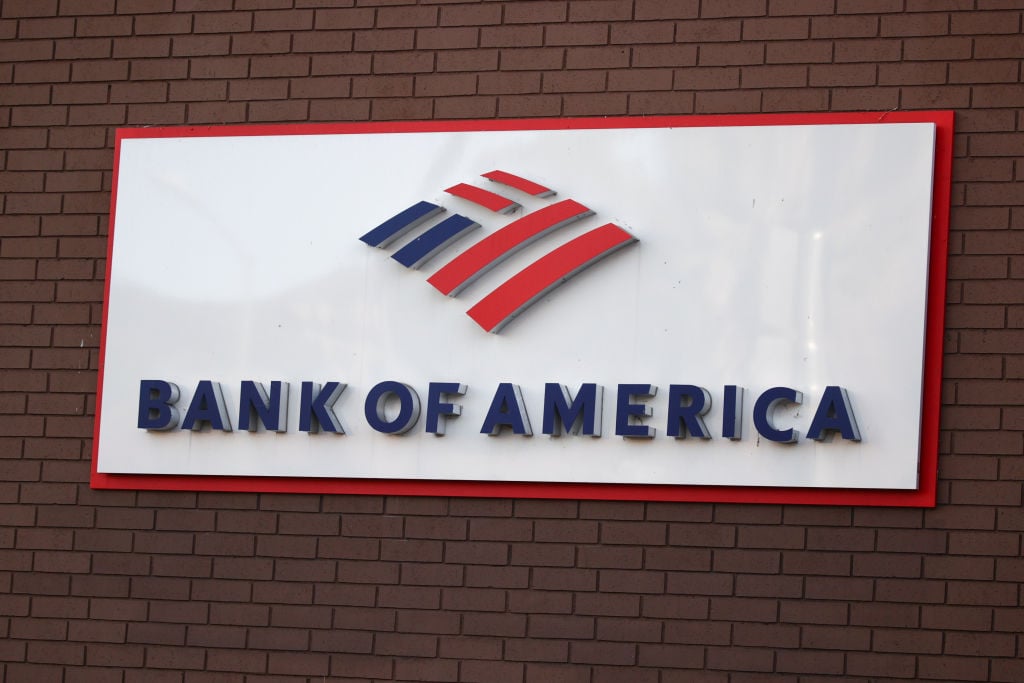Not long ago, my own medium-sized city was awash in all manner of local, statewide, regional, and national financial-services institutions. But when I drive through the city today, I'm struck by the pervasiveness of Bank of America (NYSE:BAC) branches. They're not yet on every corner, but one needn't pack a lunch for a trip to the bank's nearest outpost.
That pervasiveness may only increase if the bank's management succeeds in surpassing the current ceiling on its growth. A 1994 federal law currently caps any bank's share of total U.S. deposits at 10%. As The Wall Street Journal noted on Tuesday, Bank of America has cranked up a wide-ranging lobbying and educational campaign intended to meaningfully lift -- or even eradicate -- that restriction.
Starting as a regional West Coast institution, in 1998 Bank of America acquired Charlotte, N.C.-based NationsBank, creating the first coast-to-coast banking operation. At the end of last year's third quarter, the bank operated 5,722 retail branches, 68% more than Wachovia (NYSE:WB), the nation's second-largest retail banking institution. Bank of America itself is also the nation's largest deposit holder, and the second-largest bank by market value, following Citigroup (NYSE:C).
The bank's campaign is very much a grassroots effort. Last year, votes before the North Carolina Bankers Association and the New Hampshire Bankers Association resulted in shows of support for altering the federal depository policy.
As an economist, I'm hard-pressed to see how allowing one institution to account for more than just one-tenth of total bank deposits would pose a danger to the banking system, or to consumers' best interests. And as a consumer, I like being able to travel from my home in Florida to Texas, California, or wherever, knowing in advance that I'll be able to walk into my bank and easily access my accounts. Indeed, the ceiling was set at a time when regulators were nervous about permitting banks to cross state lines. That nervousness has long since vanished; so should a deposit ceiling that's already an anachronism.
Bank of America has distributed a position paper with its rationale for altering the ceiling, but it stops short of indicating whether management is just seeking a higher limit, or aiming for a total removal of the regulation.
Bank of America contends that, in addition to stunting the growth of the nation's largest banks, the deposit restriction keeps U.S. banks artificially small, increasing their vulnerability to takeover efforts by foreign institutions lacking similar restrictions. The bank's campaign is already facing pushback from community banks through the Independent Community Bankers of America.
Conversely, I'm more than a little surprised that it apparently has garnered support from Rep. Barney Frank (D-Mass.), the new chairman of the House Financial Services Committee. Since any change in the regulation would require the approval of Congress, Frank's backing is important.
What might this push mean for Bank of America attractiveness to investing Fools? I believe that the current economic climate makes major banks that combine retail operations, capital markets groups, and international exposure more than a little appealing. In fact, careful analyis seems to render Bank of America, Citigroup, and JPMorgan Chase (NYSE:JPM), among others, potentially profitable additions to Foolish portfolios.
For related Foolishness:
Bank of America and JPMorgan Chase are Income Investor recommendations. Discover more Fool-recommended dividend-paying stocks with a free 30-day trial subscription.
Fool contributor David Lee Smith owns shares in Bank of America, but does not have positions in any of the other companies mentioned. The Fool's disclosure policy never charges a service fee.





